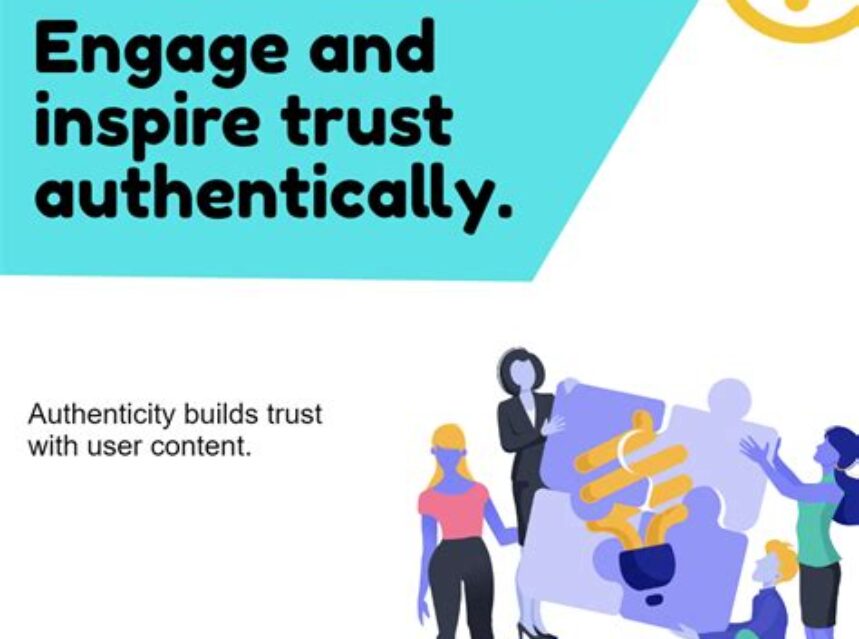The Role of User-Generated Content in Building Brand Authenticity and Trust

Learn how user-generated content impacts brand authenticity, builds trust, and drives marketing strategies. Discover how to measure UIn today’s digital age, brands are constantly seeking new ways to connect with their audience and build trust. One effective strategy that has gained traction in recent years is the use of user-generated content (UGC). By understanding what UGC is and its impact on brand authenticity, businesses can effectively leverage it to build trust and enhance their marketing strategies. In this blog post, we will delve into the role of user-generated content in building brand authenticity and trust. We will explore the concept of UGC, its impact on brand authenticity, and how businesses can use it to build trust with their audience. Additionally, we will discuss how to leverage UGC for marketing strategies and measure the success of UGC campaigns. Join us as we uncover the power of user-generated content in strengthening brand authenticity and fostering trust with consumers.
Understanding User-Generated Content
User-generated content (UGC) refers to any form of content that is created by the users of a platform or website, rather than by the site’s own team. This can include text, images, videos, reviews, and more. UGC has become increasingly prevalent in the digital landscape, as social media and online communities have provided platforms for users to share their thoughts and experiences.
One of the key aspects of UGC is its authenticity. Unlike content created by brands, UGC is often seen as more genuine and trustworthy, as it comes directly from the people who have used the products or services being discussed. This authenticity can have a powerful impact on a brand’s reputation and appeal to consumers.
Understanding UGC is important for businesses looking to leverage this type of content for their marketing strategies. By tapping into the experiences and opinions of real users, brands can build trust with their audience and create more relatable and compelling campaigns. However, it’s also essential to recognize the potential risks and challenges associated with UGC, such as the need to monitor and moderate user contributions to ensure they align with brand values.
Overall, UGC can play a significant role in shaping a brand’s image and influencing consumer perceptions. By understanding the nature of user-generated content and its impact on authenticity and trust, businesses can develop more effective marketing strategies and connect with their audience on a deeper level.
Impact on Brand Authenticity
In today’s digital age, user-generated content (UGC) has become a powerful tool for brands to connect with their audience and build trust. When consumers see real people using and enjoying a product or service, it creates a sense of authenticity that can be incredibly valuable for a brand. UGC has the ability to humanize a brand, making it more relatable to consumers and strengthening their connection to the company and its offerings.
Moreover, UGC helps brands to stand out in a crowded marketplace by showcasing real, unfiltered experiences and testimonials from satisfied customers. This non-sponsored content can create a more genuine and trustworthy image for a brand, as it is coming directly from the consumers themselves, rather than being orchestrated by the marketing team.
By leveraging UGC, brands can demonstrate their commitment to customer satisfaction and quality, while also showcasing the real-life benefits and value of their products or services. This social proof can have a significant impact on brand authenticity, as it shows that the company is not just telling consumers how great their offerings are, but that real, everyday people are backing up these claims with their own experiences.
Ultimately, the impact of UGC on brand authenticity cannot be overstated. When consumers see that a brand is not only willing to share real customer stories, but also encourages and values their input, it creates a powerful message of transparency and trustworthiness that can greatly enhance a brand’s reputation and credibility.
Building Trust with User-Generated Content
Building trust with User-Generated Content (UGC) is a crucial aspect of brand authenticity and marketing strategies. When consumers see real people using and endorsing a product or service, it creates a sense of trust and credibility that traditional advertising cannot always achieve.
One way to build trust with UGC is by showcasing customer testimonials and reviews on your website and social media platforms. This allows potential customers to see real-life experiences and opinions, which can influence their purchasing decisions.
Another effective method is to engage with your audience and encourage them to create and share their own content related to your brand. This not only increases brand loyalty, but also demonstrates that you value your customers’ opinions and experiences.
Measuring the success of your UGC campaigns is also important for building trust. By analyzing engagement, reach, and conversion rates, you can determine the impact of UGC on your brand and make adjustments to your marketing strategies accordingly.
Leveraging UGC for Marketing Strategies
In today’s digital age, User-Generated Content (UGC) has become a powerful tool for marketers to connect with their audience. Leveraging UGC for marketing strategies can be an effective way to build brand authenticity and trust.
One of the key benefits of using UGC in marketing strategies is its ability to create a sense of authenticity and transparency. When customers see real people using and enjoying a product or service, it can have a much stronger impact than traditional advertising. This authenticity can help build trust with potential customers, as they are more likely to believe the experiences of real users.
Moreover, UGC can also help in creating a sense of community around a brand. By encouraging customers to share their experiences and opinions, a brand can foster a sense of belonging and connection. This can not only strengthen loyalty among existing customers, but also attract new ones who are looking to be part of a like-minded community.
Finally, leveraging UGC for marketing strategies can provide valuable insights into consumer behavior and preferences. By analyzing the content that users create, marketers can gain a deeper understanding of what resonates with their audience and tailor their strategies accordingly. This can lead to more targeted and effective marketing campaigns, ultimately driving better results for the brand.
Measuring Success of UGC Campaigns
Measuring the success of UGC campaigns is essential for brands looking to understand the impact of user-generated content on their marketing strategies. By analyzing various metrics, brands can gain valuable insights into the effectiveness of their UGC efforts.
One important metric to consider when measuring the success of UGC campaigns is engagement. High levels of engagement, such as likes, shares, and comments, indicate that the content is resonating with the audience and generating interest. Brands can track these metrics to gauge the level of interaction and determine the effectiveness of their UGC.
Conversion rates are another key metric to consider when evaluating the success of UGC campaigns. By measuring the number of conversions that can be attributed to user-generated content, brands can understand the impact of UGC on their bottom line. Whether it’s driving website visits, product purchases, or newsletter sign-ups, tracking conversion rates can provide valuable insights into the ROI of UGC efforts.
In addition to engagement and conversion rates, brands should also pay attention to brand sentiment. Monitoring the sentiment surrounding user-generated content can help brands understand how their audience perceives their brand. By analyzing comments and feedback, brands can gain valuable insights into the overall sentiment and reputation of their brand, helping them make informed decisions about future UGC campaigns.
Frequently Asked Questions
What is user-generated content (UGC)?
User-generated content refers to any form of content, such as images, videos, reviews, or social media posts, that has been created and shared by users of a product or service.
How does user-generated content contribute to brand authenticity?
UGC can make a brand more authentic by showcasing genuine experiences and opinions of real customers, which can create a sense of trust and credibility.
What are some examples of successful user-generated content campaigns?
Some examples include Starbucks’ White Cup Contest, where customers were invited to decorate their coffee cups and share their designs, and Coca-Cola’s #ShareACoke campaign, where customers could personalize and share their own Coke bottles.
How can brands encourage the creation of user-generated content?
Brands can encourage UGC by hosting contests, featuring customer photos on their website or social media, or creating branded hashtags for customers to use when sharing their experiences.
What are the benefits of incorporating user-generated content in marketing strategies?
Benefits include increased engagement, social proof, cost-effectiveness, and the ability to reach new audiences through authentic storytelling.
What are some potential challenges or risks of using user-generated content?
Challenges include the lack of control over the content created, the potential for negative or inappropriate content, and the need for a clear strategy for managing and moderating UGC.
How can brands measure the success of their user-generated content efforts?
Brands can measure success through metrics such as engagement rates, reach, website traffic, sales attributed to UGC, and sentiment analysis of customer responses.


